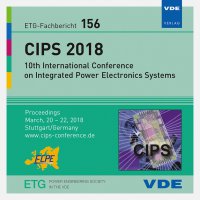Advanced Die-attach by Metal-powder Sintering: The Science and Practice
Conference: CIPS 2018 - 10th International Conference on Integrated Power Electronics Systems
03/20/2018 - 03/22/2018 at Stuttgart, Deutschland
Proceedings: CIPS 2018
Pages: 9Language: englishTyp: PDF
Personal VDE Members are entitled to a 10% discount on this title
Authors:
Lu, Guo-Quan (Department of Materials Science and Engineering, Virginia Tech, Blacksburg, VA, USA)
Wang, Meiyu (Center for Power Electronics Systems, Virginia Tech, Blacksburg, VA, USA)
Mei, Yunhui; Li, Xin (School of Materials Science and Engineering, Tianjin University, Tianjin, China)
Abstract:
Powder metallurgy or metal-powder sintering, which has been practiced for hundreds of years, is emerging as an advanced joining technology for manufacturing power electronics devices/modules. Compared with traditional soldered joints, sintered metal joints have the advantages of lead-free, higher thermal and electrical conductivities, higher reliability, and ability to support higher junction temperature. There are many commercial metal-powder products being marketed for die-attaching power chips. They come in different chemical formulations, particle morphologies and size distributions, and flow characteristics. In addition, there are two different versions of the bonding process, one requiring a uniaxial force, henceforth termed pressure-assisted sintering, and the other no force or pressure-less sintering. It has been extensively reported that the sintered joint performance and reliability depend strongly on the properties of the powder material, the surface finish on bonding parts, and temperature-time-pressure profile. The multitude of material and processing variables can cause confusion when deciding to implement the bonding technology. The purpose of this paper is to help potential adopters and customers of the technology to gain a better understanding of the joining process by reviewing fundamental principles of metal-powder sintering and adhesion at the interfaces, discussing effect of sintering atmosphere, and offering practical considerations for developing pressure-assisted and pressure-less processes.


